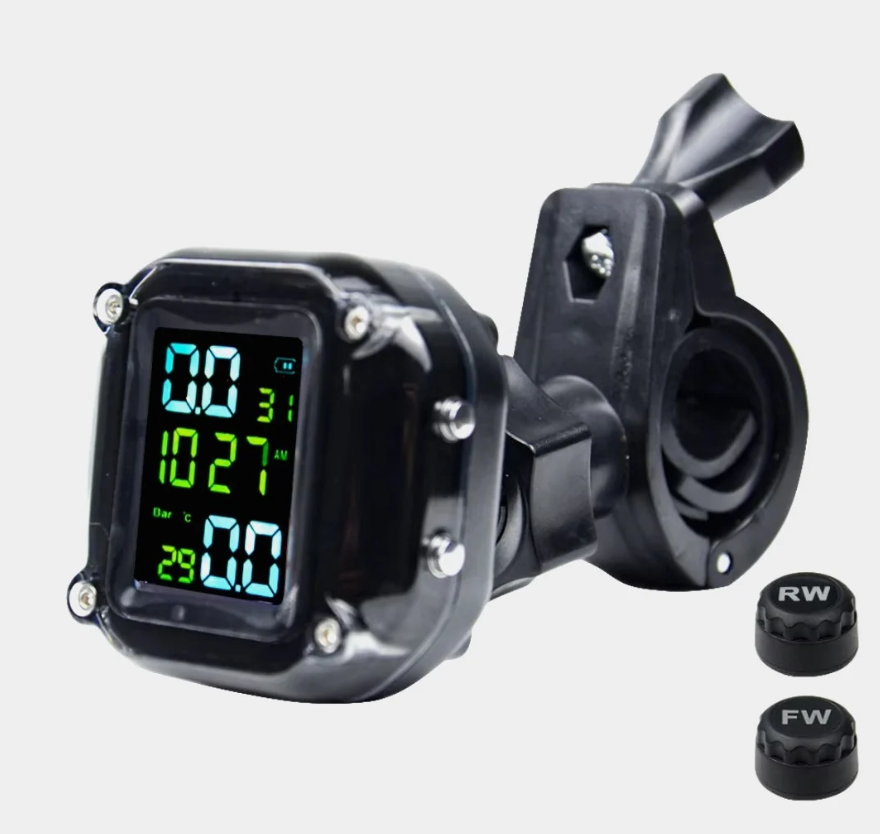Understanding the core function of a wireless tire pressure monitoring system is essential for any modern driver. Essentially, it is an electronic system designed to monitor the air pressure inside the pneumatic tires on various types of vehicles. Unlike older, manual methods that require a physical check with a gauge, a wireless tire pressure monitoring system provides real-time data and alerts the driver directly to their dashboard or a mobile app, ensuring continuous awareness of tire health without any physical intervention. This technology has become a critical feature for safety, efficiency, and vehicle maintenance.
The fundamental principle behind this technology involves sensors and a receiver. Each wheel is equipped with a dedicated sensor that constantly measures the tire’s internal pressure (and often temperature). This data is then transmitted wirelessly, typically via radio frequency (RF), to a central control unit or receiver within the vehicle. The receiver processes this information and, if the pressure in any tire falls below or rises above the manufacturer’s recommended thresholds, it triggers a warning light on the dashboard. This immediate alert is the primary value of a wireless tire pressure monitoring system, allowing for proactive action before a situation becomes dangerous.
Key Components of a Wireless Tire Pressure Monitoring System
The Sensors: The Eyes Inside Your Tires
At the heart of every wireless tire pressure monitoring system are the tire pressure sensors. These are small, battery-powered devices mounted inside the tire onto the wheel rim, typically replacing the standard valve stem. Each sensor is a sophisticated piece of engineering that contains a pressure transducer, a temperature sensor, a radio transmitter, and a unique ID code. They are built to withstand extreme conditions, including immense centrifugal force, temperature variations, and exposure to moisture and chemicals. Their primary job is to take periodic measurements and broadcast this data wirelessly to the vehicle’s central computer.
These sensors are not all the same and are generally divided into two types: direct and indirect. A direct wireless tire pressure monitoring system, which is the most common and accurate type, uses the physical sensors described above. An indirect system, which is not wireless in the same way, uses the vehicle’s existing Anti-lock Braking System (ABS) wheel speed sensors to estimate pressure based on rotational differences between wheels. This article focuses on the direct type, which constitutes a true wireless tire pressure monitoring system with dedicated hardware in each tire providing precise, real-time data.
The Significant Benefits of Installing a Wireless Tire Pressure Monitoring System
Enhancing Safety and Improving Vehicle Performance
The most crucial advantage of a wireless tire pressure monitoring system is the significant enhancement to driver and passenger safety. Under-inflated tires are a major cause of tire failure, including blowouts, which can lead to a loss of vehicle control and serious accidents. They also negatively affect handling, braking distance, and stability, especially at high speeds or during emergency maneuvers. By providing an immediate alert to pressure loss, a wireless tire pressure monitoring system gives the driver crucial time to slow down and find a safe place to pull over and address the issue, potentially preventing a catastrophic event.
Beyond safety, a wireless tire pressure monitoring system offers substantial practical benefits. First, it helps improve fuel economy. Properly inflated tires have less rolling resistance, meaning the engine doesn’t have to work as hard, directly saving money on gas. Second, it extends the lifespan of your tires. Under-inflation causes uneven and excessive tread wear, forcing premature replacement. By maintaining optimal pressure, you ensure even wear and get the full mileage out of your investment. Finally, it contributes to vehicle maintenance by helping you avoid damage to wheels and suspensions that can be caused by driving on under-inflated tires.
Choosing the Right Wireless Tire Pressure Monitoring System For Your Vehicle
OE vs. Aftermarket: Understanding Your Options
Many modern vehicles come equipped from the factory with a wireless tire pressure monitoring system as a standard or optional feature, often referred to as an Original Equipment (OE) system. These are integrated seamlessly into the vehicle’s dashboard and computer network. However, if your car did not come with this technology, a wide array of aftermarket systems are available. These aftermarket kits provide all the benefits of an OE system and can be easily installed on virtually any vehicle, making advanced tire safety accessible to everyone, not just owners of new cars.
When selecting an aftermarket wireless tire pressure monitoring system, there are several factors to consider. The first is the type of display: some systems have a dedicated screen that mounts on your dashboard or windshield, while others are more discreet, using simple LED indicators, or even connect to your smartphone via Bluetooth. Secondly, consider sensor quality and battery life, as replacing sensor batteries can be inconvenient. Finally, look for features that matter to you, such as programmable pressure thresholds, temperature readings, or a compact and user-friendly design. Researching these aspects will ensure you choose a wireless tire pressure monitoring system that perfectly fits your needs and provides peace of mind on every journey.
